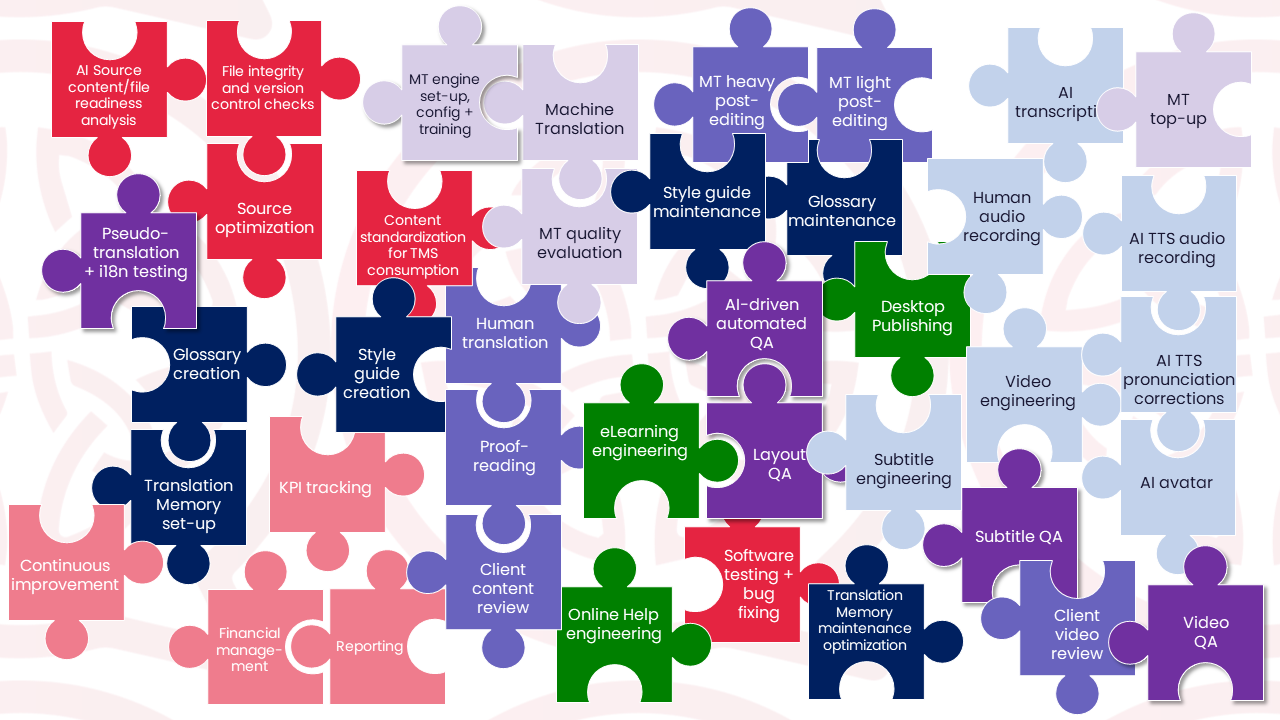Tailored Video Localization
Smart use of AI
Video is now the go-to content medium for most businesses. In large part this is due to the effect AI is having in reducing the cost and resources required to take video global.
At Rubric we partner with you to build a localization workflow that suits your needs, whether that's human-only or AI-heavy.
We have extensive experience with a number of specialist AI tools and know how to optimize them for each client. We can help you navigate the potential pitfalls of 'one-click' video localization whilst offering a service that delivers.
Whatever your budget, timeline or content we'll design a video localization process that works for you.
Global content strategy
Don't waste resources on inefficient localization
Companies often approach video translation in the wrong way. This wastes valuable time and resources, making their video production even more expensive than it already is.
We start by helping you identify the strategic goals of your translated video.
This gives you:
- More control over all your localization activities.
- Clarity on exactly how your videos will improve global engagement.
- Better use of your localization budget.
Our strategic focus allows you to only localize video content that will bring your business results.
An expert team
Your dedicated team reduces your workload
With most translation providers, you are in forced to be in contact with many people — the provider's finance department, individual translators, account managers…
This takes up a huge amount of your time and energy. It makes video translation even more stressful and adds to your workload.
With Rubric, your dedicated program manager leads a team of expert project managers. They always look for ways to make your translation process more efficient. Together, you will find ways to take that extra work off your plate without going over your budget.
Data-driven
Quantify the results of your video translation
How will you know if your translated video is actually contributing to your global goals?
We work with you to set customized Key Performance Indicators (KPIs) to track the performance of your video localization. Together with your dedicated project manager, you will regularly check in with these metrics and continuously improve your localization processes over time.
Our data-driven approach means that you can:
- Make better decisions about which content should be localized.
- Continually optimize your use of your localization budget.
- Have data to demonstrate the performance of your localized content.

"Rubric is a phenomenal partner for Amway and the value they offer goes way beyond translation. Thank you Rubric for making this a great experience!"
Anne Stawiski, Senior Lead Corporate Trainer, Amway
Every client is different
Different content, different audience, different budget, schedule, pain points and quality requirements.
So, we design a unique localization process.
Our Project Management team are experts at designing tailored workflows utilizing the best of human expertise and technological ingenuity. The human touch can be as light (or as heavy) as you need, but with Rubric there is always a human-at-the-core, providing targeted application of the most appropriate tool for each task.
There are lots of different pieces to bring together and each client's process looks different. A bit like putting together a unique jigsaw puzzle for each project.
We call this process Orchestration.

How our client optimized their video workflow to cut translation costs
A software company was looking to localize a series of tutorial videos for their international markets. The videos included screenshots of the company's software.
These screenshots presented a problem. People don't often realize that the on-screen text also needs to be localized, which adds to the overall cost of localization, the delivery time, and the engineering time.
With just one simple optimization, we helped them significantly reduce the time and cost of engineering associated with video translation.
90%
reduction in video engineering costs
CLIENT TESTIMONIAL
"Thank you so much it’s been a pleasure working with you and your team. The videos have turned out perfectly."
National Training Manager
Expert Resources
At Rubric, we have always been at the cutting edge of translation and localization. Browse our blogs, eBooks, webinars and case studies to learn more, or subscribe below to receive regular updates.